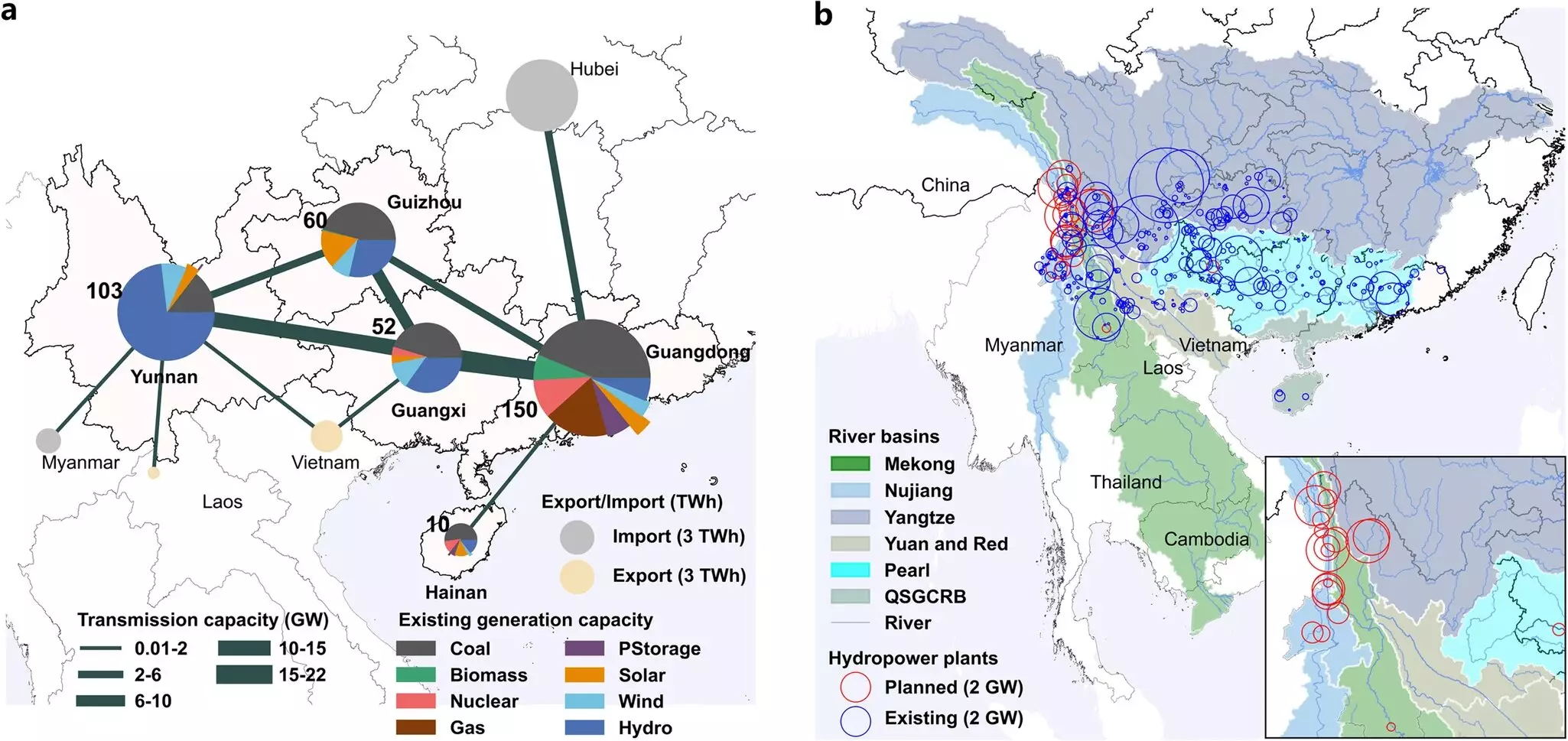China has set a commendable goal of achieving carbon neutrality by 2060, which has been celebrated by environmentalists around the world. However, a recent study has shed light on the potential hidden costs and environmental challenges that may come with this ambitious decarbonization plan. The research, led by Stefano Galelli from the School of Civil and Environmental Engineering at Cornell University, focuses on the negative impacts that decarbonizing the China Southern Power Grid could have on river basins and cropland in China.
One of the major concerns highlighted in the study is the potential impact of building several dams for hydropower production in order to achieve decarbonization goals. These dams are likely to be placed on transboundary rivers that are shared by multiple countries, leading to ecological disruptions not only in China but also in downstream regions. For example, the Salween and Mekong river basins, which are important biodiversity hotspots, are expected to be significantly affected by additional dam constructions. This could have far-reaching consequences on riverine ecosystems and the communities that depend on them for their livelihoods.
Decarbonizing the China Southern Power Grid would also require converting a significant amount of cropland to support the growth of solar and wind power. This poses a significant challenge in a country like China, where there is already pressure to ensure food security and self-sufficiency in food production. With a growing population and limited arable land, the competition between land use for agriculture and renewable energy production becomes a critical issue that needs to be addressed. The study points out that excluding protected sites, the remaining cropland available for solar and wind power development is limited.
As China aims to transition away from coal power plants towards renewable energy sources, the demand for electricity continues to rise. However, the space required for building solar and wind power plants may not be evenly distributed across the country. The research suggests that a significant portion of the land needed for renewable energy infrastructure would be concentrated in specific regions like the Guangxi province, where it could impose heavy burdens on local communities in terms of ecological, social, and financial costs.
While the challenges of decarbonizing the China Southern Power Grid are significant, there are promising technologies and strategies that could help mitigate the environmental impacts. Innovations such as floating solar panels, agrivoltaics (solar panels integrated with agricultural activities), carbon sequestration, more efficient batteries, and electricity demand management offer potential solutions to the land use issues and ecological disruptions associated with large-scale renewable energy development. As technology continues to evolve, there is hope that new advancements will enable more sustainable and equitable decarbonization efforts in the future.
China’s commitment to achieving carbon neutrality by 2060 is a crucial step towards combating climate change on a global scale. However, it is essential to carefully consider the environmental implications and trade-offs associated with decarbonization efforts, particularly in terms of land use and river basin conservation. By adopting strategic and sustainable approaches to renewable energy development, China can lead the way in transitioning to a low-carbon economy while minimizing negative impacts on the environment and local communities.


Leave a Reply